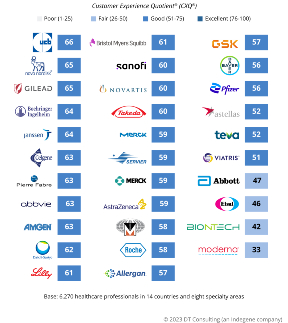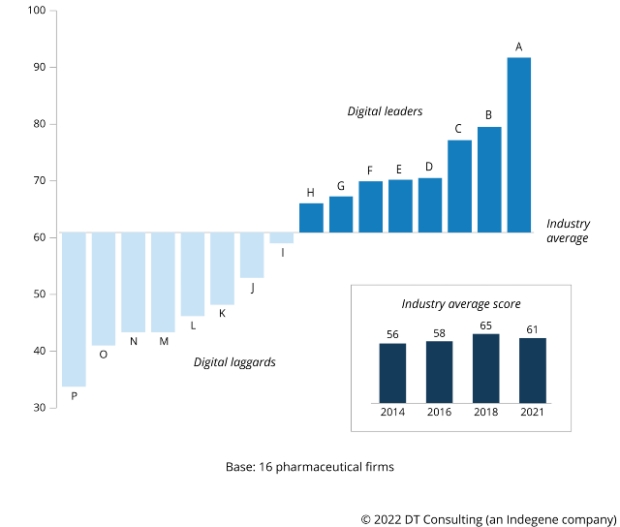We’ve come a long way since pharma’s websites were “best viewed with Netscape Navigator 1.0” and the web designs that were prevalent way back in the mid-1990s would hurt modern eyes with their lack of sophistication.
Nonetheless, how to best respond to what 30 years ago was still the world wide web remains a question that has yet to be wholly answered. The industry has some pressing new challenges to face in the web space, but many companies also have yet to confront some legacy issues.
Preeminent among these are the huge variety and number of websites that most pharma companies still have. Within a single company these might be in the high hundreds, or even the low thousands, many of which may not be known about at a central level or have no clear strategic intent. Without some serious review or consolidation, this causes significant problems of efficiency, not to mention the negative end-user experiences most of our benchmarks are showing.
There are internal and external risks when people don’t know what websites are active. Simply cataloguing them is a vital first step towards reducing risk and optimising the user experiences that a company’s various web properties provide.
Driving value and meeting needs
Web strategy is not just about providing good experiences, within it pharma also needs to understand how to drive value, based upon the reality of varying country requirements and customer expectations.
To drive the efficiency and global consistency of brand messages, many global pharma companies have implemented global-to-local web content models. These see central teams creating and disseminating content to affiliates, who then adapt the content so that it aligns with their specific local needs and regulations.
Stakeholders in the US, Europe, the Middle East, and Asia will all have different needs from the web ecosystems a company provides. Individual market affiliates, which can range from high-volume, high-interaction countries like the US to smaller, leaner, low-product volume markets that have very little content of their own they can publish, will in turn also have different requirements.
Part of any web strategy is not just ‘what’ we do for our customers, but it’s ‘who’ we do it for – this requires a close understanding of different archetypes and the need to take difficult decisions about where and what to invest in. For example, different sized markets may need different proportions of global-to-local content and global web strategies can rarely be rigidly implemented. However, there are also still fundamental issues with global-to-local content models and content itself.
Content remains a critical part of a web strategy, but it seldom meets the demands expected by customers, which are based upon their daily experiences as consumers. The web should function as a ‘pull’ channel, through which users actively choose information that is relevant to them, so any failure to provide compelling, valuable content can lead to disappointing engagement levels.
Further complicating matters, every market has different local regulations and compliance requirements. These generally don’t explicitly tell you what you can or can’t do via the web, therefore local compliance and medical-legal teams must make risk-based judgement calls on what can be published. The range of views on acceptable levels of risk is further widened because each pharma company will have a unique culture in this area.
High levels of local opinion and decision-making tend to hamper the implementation of global websites and standards, particularly as these are often done by those that are not subject matter experts. Meanwhile, global teams can easily have a false sense of security, thinking they can create content once, push it out to local markets and that should be enough, as they are typically not held accountable for the impact, or lack thereof, that it creates.
However, while global teams can’t develop highly relevant content for every single market, there needs to be a balance against the economies of scale that global content models can bring and local teams’ available skill sets. Each company will have to find its own ‘sweet spot’ for this, based on the factors mentioned above. To successfully achieve this, organisations will have to set aside the time for it, and that process may vary by customer archetype.
Solving these long-standing global and local content issues will go a long way to optimising pharma companies’ web strategies, but there is a new cross-sector data challenge looming on the horizon for industry marketers.
Pharma’s brave new world of web
Once the number of websites has been tamed and global and local ways of working optimised, today’s web strategy is about maintaining traffic to those assets and giving customers a reason to return. That means leveraging audience understanding to provide simple and relevant on-line services, which takes you into the new world of first party data capture – which is about offering customers value in exchange for opportunities to collect and leverage their data to improve their own experiences.
First party data capture is an issue because of Google’s decision to remove from Chrome cookie tracking capabilities, which have been the gold standard of understanding what customers were doing on your web sites, as well as before and after their visits. Chrome has about a two-thirds share of the internet browser market, so this move is going to cut a swathe through customer understanding, and it’s already causing all sorts of industries to try to find their own solutions to it, with significant cross-sector consternation about how they can get do that within a deadline that’s becoming ever more real.
Google first announced its intention to phase out third party cookies back in January 2020, so the clock has been ticking on this development for some time. Fast forward to January this year and the company’s somewhat delayed plans kicked up a gear, with the launch of its new Tracking Protection tool that restricts cookies for 1% of Chrome’s global users by default.
At a time when pharma wants to provide a more tailored omnichannel experience to its stakeholders, it is vital they know who they’re talking to where and when. A lot of companies we talk to do not yet have a solid web and data strategy for responding to Google’s changes, but they know they need them.
However, time is running out – the company aims to phase out third-party cookies for all Chrome users sometime in the second half of this year, subject to addressing any remaining competition concerns held by the UK’s Competition and Markets Authority.
At the same time that Google’s began a piloted rollout of Tracking Protection, one company made an eye-catching change to its web strategy. At the start of this year Lilly launched direct, access for patients with obesity, migraine and diabetes in, for now, the US. In addition to providing telehealth services, LillyDirect opens up a new direct-to-consumer channel for patients to get access to some of the company’s medicines straight from the manufacturer. While smaller biotech companies in the US have used the route to sell products directly to patients, pharmaceutical companies have traditionally had an arm’s length approach to dealing directly with patients. This changes that. Furthermore, while the service is restricted to the US for now, the company isn’t ruling out bringing the model to Europe, subject to being able to do so in a compliant way.
LillyDirect could be a game changer for pharma, and it’s one that has the potential to disrupt the entire supply chain, and streamline the value chain, in the US, by giving Lilly an element of control over the market and potentially bringing many other benefits in areas like data capture and insight. It also raises the question as to what other disruptive new approaches may emerge around the world in the coming years as technology advances and online engagement becomes ever more ubiquitous.
Future-focused web and data strategies
Historically pharma companies have thought of web strategy as purely a commercial strategy lever. The reality is that expectations and needs have changed. Now it’s something much broader and it’s no longer only about production information and promotion, it must also incorporate a balanced medical – community information exchange that strives to deliver a best-in-class, service-oriented customer engagement construct.
Pharma’s challenge today is to define a global web service ecosystem that delivers a data capture engine which will drives new levels of seamless cohesion and provides a more consistent and relevant experience for customers. In the wake of significant disruptive elements arriving on the scene, companies must turn their attention to enabling efficiencies and agility in their global web operations to maintain competitive relevancy.
Main image by Ivan Vranić on Unsplash






